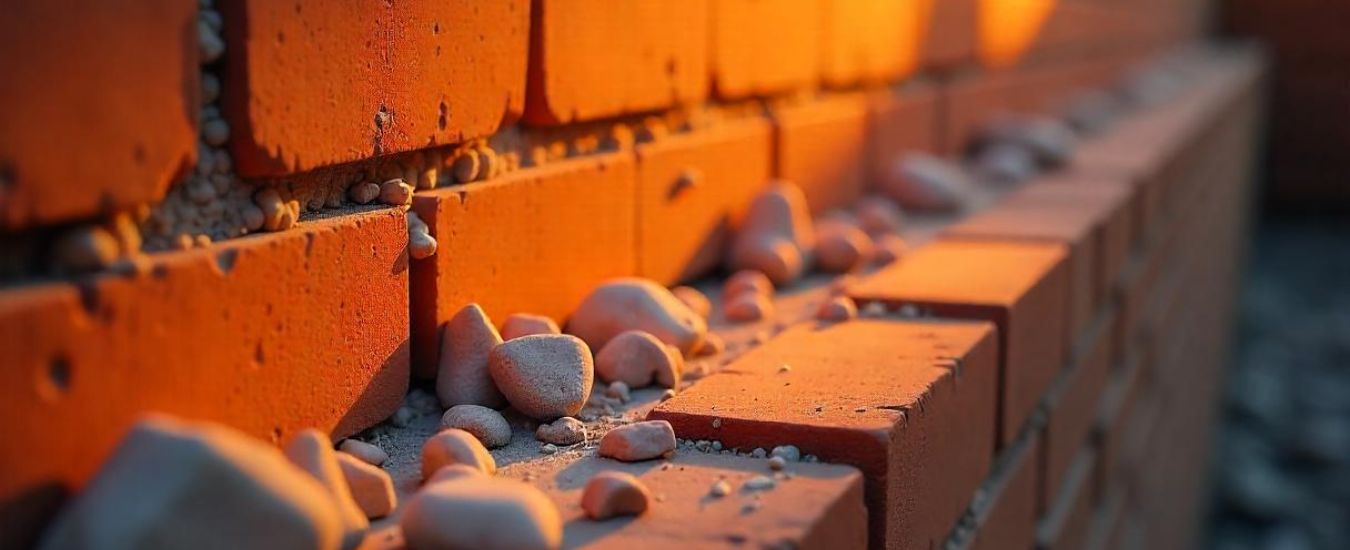Ever wondered what keeps those thick brick walls standing tall for decades? While most people focus on the outer layer of bricks, the real strength lies in something called “hearting.” It’s the core of the wall—literally. If facing bricks are the skin, hearting is the muscle.
Hearting in brick masonry may go unnoticed by the untrained eye, but it is the soul of the wall. From distributing loads to enhancing insulation, proper hearting ensures that your walls are durable, stable, and safe.
Whether you’re a contractor, civil engineer, or just a curious learner, always give hearting the attention it deserves during construction!
In this guide, we will take a deep dive into the world of hearting in brick masonry, uncovering why it matters, how it’s done, and what materials make the best hearting.
Understanding the Basics of Brick Masonry
Before we zoom in on hearting, let’s take a look at brick masonry as a whole. Brick masonry is the construction of walls using bricks and mortar arranged in specific patterns, known as bonds. It consists of three key parts:
- Facing: The visible outer layer.
- Backing: The rear or inner side.
- Hearting: The space between the two.
What is Hearting in Brick Masonry?
Hearting is the internal filling between the front and back walls of a composite or thick wall. It’s typically made from brickbats, stone chips, or even broken bricks bonded together using mortar. Hearting isn’t usually visible from the outside but plays a vital role in giving the wall strength and mass.
Why is Hearting Important in Brick Masonry?
Hearting is more than just a “gap filler.” Here’s why it’s crucial:
Provides Structural Integrity
It ensures that the wall acts as one solid unit, preventing movement or collapse.
Ensures Load Distribution
Weight from the top of the wall gets evenly spread across the entire wall body.
Prevents Voids and Air Pockets
Unfilled hearting can cause cracks, seepage, and weakening over time.
Offers Thermal & Sound Insulation
The denser the core, the better the thermal resistance.
Materials Used in Hearting
Hearting isn’t made from the same high-quality bricks used in the face. Common materials include:
- Brick Bats: Small pieces of broken bricks
- Stone Chips or Rubble: Often used in rural or budget projects
- Waste Brick Pieces: Economical and sustainable
- Mortar (Lower Grade): A leaner mix than what’s used on faces
Ideal Characteristics of Hearting Materials
- Must bond well with mortar
- It should be relatively uniform in size
- Must be free of dust, oil, or organic matter
- It should be dense and non-porous
Construction Method of Hearting
Here’s how it’s done:
- Lay the face bricks in proper alignment.
- Prepare mortar of lean consistency.
- Fill the gap with brickbats or rubble.
- Compact the material to avoid air pockets.
- Ensure bonding with both faces.
- Continue layer by layer.
This process is repeated for each course (layer) of the wall.
Difference Between Facing and Hearting in Brick Masonry
| Aspect | Facing | Hearting |
|---|---|---|
| Visibility | Visible | Hidden |
| Material Quality | High | Medium or Low |
| Function | Aesthetic & Weather Protection | Strength & Mass |
| Mortar Quality | Rich Mix | Lean Mix |
Common Mistakes in Hearting
- Using overly large or irregular bats
- Skipping mortar bonding
- Not compacting properly
- Leaving unfilled voids
These may lead to structural failures, water leakage, or bulging.
Tips for Proper Hearting
- Use well-graded brick bats or stones
- Check regularly for voids
- Compact manually or with rods
- Maintain joint continuity for strength
Hearting in Different Types of Masonry
Each brick bond handles hearting slightly differently:
- English Bond: Clear hearting lanes; easy to fill
- Flemish Bond: Requires careful arrangement of bats
- Rat-Trap Bond: Uses hollow pockets – minimal hearting needed
Defects Caused by Poor Hearting
- Wall cracks or bulging
- Rainwater seepage
- Loss of load-bearing capacity
- Weak thermal insulation
These defects can increase repair costs and decrease the lifespan of the building.
Modern Alternatives to Traditional Hearting
In newer construction practices, alternatives include:
- Concrete Infill: More stable, faster
- AAC Blocks or Lightweight Bricks: Used for thermal insulation
- Precast Panels: In advanced prefab construction
Hearting in Load-Bearing vs. Non-Load-Bearing Walls
In load-bearing walls, proper hearting is non-negotiable.
In non-load-bearing partitions, the need for hearting may vary and can sometimes be replaced with lightweight fillers.
FAQs
Can I skip hearting in thin brick walls?
Thin walls (like single-brick thick walls) may not require hearting. However, any wall above 9 inches should have proper hearting.
What’s the best material for hearting in residential buildings?
Brick bats bonded with mortar are cost-effective and suitable for most residential projects.
Is hearting needed in cavity wall construction?
No. Cavity walls are designed with intentional air gaps for insulation and don’t require traditional hearting.
How thick should the hearting layer be?
It depends on the wall thickness. In 13.5-inch or thicker walls, hearting typically fills the central 4.5-inch core.
Can concrete be used for hearting instead of bricks?
Yes, especially in modern construction, concrete or lightweight blocks can be used for faster and stronger builds.

